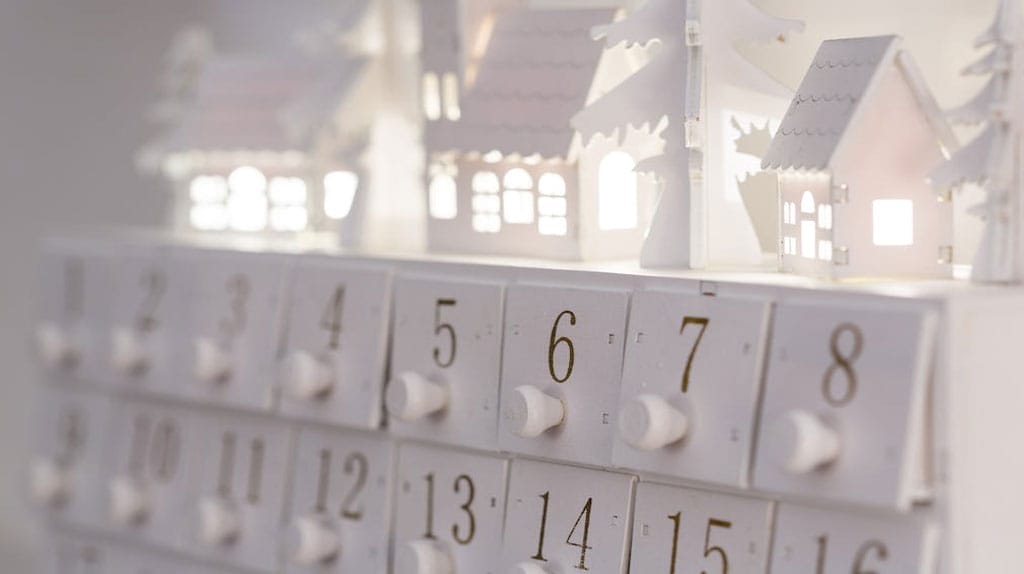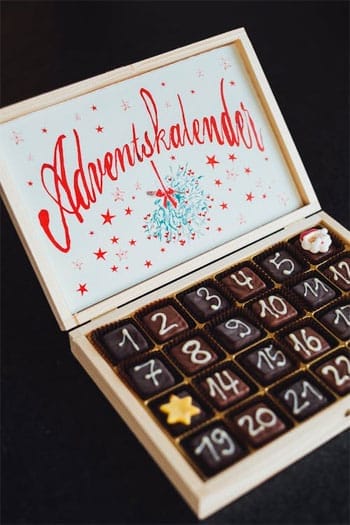Advent Calendar History and Tradition
As the holiday season approaches, you may be looking forward to opening your advent calendar each day to discover a new treat or surprise. But do you know the history and tradition behind this beloved Christmas countdown?

Key Points
- The advent calendar originated in Germany in the 19th century.
- They have evolved from simple chalk marks to intricately designed calendars with treats or surprises behind each door.
- Advent calendars have traditional customs associated with them, such as lighting candles and performing acts of kindness.
- They hold a deeper significance, symbolizing the anticipation and joy of the Christmas season.
- Throughout this article, we will explore the history, evolution, customs, and significance of advent calendars.
More Than Just a Countdown
Advent calendar history and tradition dates back to the 19th century in Germany. Originally, these calendars featured simple chalk marks on walls to track the days leading up to Christmas. But over time, they evolved into the intricate and personalized calendars we know and love today.
The advent calendar also holds a deeper significance, symbolizing the anticipation and joy of the Christmas season. Whether you light candles, say prayers, or perform acts of kindness, advent calendars have long been associated with traditional customs that help prepare for the arrival of Christmas.
In this article, we will explore the origins and evolution of advent calendars, uncover the traditional customs associated with them, and understand the deeper significance they hold during the holiday season.
The Evolution of Advent Calendars
Advent calendars have come a long way since their origins as simple chalk marks on walls. Today, they are known for their intricate designs and the countless surprises that they hold inside. Let’s explore the evolution of advent calendars and some interesting facts about them.
No matter how they have evolved, advent calendars remain a beloved holiday tradition for many. From simple paper calendars to elaborate designs with hidden treasures, the joy of counting down to Christmas with an advent calendar is a tradition that endures.

Advent calendars have been an important part of Christmas holiday traditions for many families for centuries. The advent calendar tradition dates back to the 19th century, when German families made chalk marks on doors or lit candles to count down the days leading up to Christmas. Over time, advent calendars have evolved into the colorful, fun-filled calendars we know and love today.
Advent Calendar Popular Customs
There are many traditional customs associated with advent calendars. One popular tradition is to light candles on an advent wreath each day leading up to Christmas. Another is to say a special prayer or read a passage from the Bible each day.

Some families choose to perform an act of kindness or give a small gift to someone each day, using the advent calendar as a reminder to spread love and cheer during the holiday season.
The more modern advent calendars often have hidden doors that reveal a small treat or piece of chocolate each day. These little surprises can bring joy and excitement to children and adults alike, reminding us that the holiday season is a time for celebration and happiness.
Regardless of the specific customs and traditions associated with advent calendars, one thing remains the same: the advent calendar is a beloved holiday tradition that brings families together and keeps the spirit of Christmas alive throughout the month of December.
Advent calendars are much more than just a countdown to Christmas. They hold a special significance and tradition that has been celebrated for centuries. Beyond the excitement of opening a door or receiving a sweet treat each day, advent calendars symbolize the anticipation and joy that the Christmas season brings.
For many, advent calendars are a way to prepare for the arrival of Christmas. Some people light candles or say prayers, while others perform acts of kindness or engage in charitable giving. These traditions remind us to reflect on the true meaning of the season and to share our blessings with those in need.
“Advent is a time of waiting, of anticipation, of silence. We wait for the light to come amidst the darkness, for the promise of hope and redemption to be fulfilled.”
Advent calendars also remind us of the importance of family and community. As we gather each day to open a new door or share in a small treat, we are reminded of the love and support that surrounds us. These small moments of connection and joy can truly make a difference in our lives, especially during the busy and often stressful holiday season.
So as you countdown to Christmas with your advent calendar, take a moment to appreciate the deeper significance of this cherished tradition. Remember the true meaning of the season and the joy that comes from sharing it with others.

The origin of advent calendars can be traced back to the 19th century in Germany. However, the tradition of counting down to Christmas dates back even further. The early Christians used to light candles and observe fasts in anticipation of the birth of Jesus. Nowadays, advent calendars are an important part of the Christmas season, as they symbolize the joy and anticipation of the holiday.
Did you know that the advent calendar tradition has evolved over time? In the past, people used to mark the days leading up to Christmas with chalk on walls. Today, advent calendars come in many shapes and sizes, and often contain chocolates or small gifts behind each door.
Advent calendars have also been used in conjunction with other holiday traditions. For example, in some cultures, the advent calendar will include religious reminders, such as Bible verses or daily prayers. In other traditions, people use advent calendars as a way to perform acts of kindness or giving to others.
Regardless of how you choose to observe the tradition, advent calendars hold a special place in the hearts of many. They remind us of the true meaning of Christmas and the joy of giving to others.
FAQ
What is the origin of advent calendars?
Advent calendars have their origins in German Protestant communities during the 19th century. These calendars were used as a way to count down the days leading up to Christmas and to prepare for the arrival of Christ.
How have advent calendars evolved over time?
Advent calendars have come a long way since their early beginnings. They have evolved from simple chalk marks on walls to intricately designed calendars with chocolates and surprises behind each door. Today, you can find advent calendars in various themes and designs, catering to different interests and age groups.
What are some traditional customs associated with advent calendars?
Traditionally, advent calendars were used as a tool for spiritual preparation for Christmas. People would light candles, say prayers, or perform acts of kindness each day as they opened a new door on the calendar. These customs helped create a sense of anticipation and reflection during the Advent season.
What is the significance of advent calendars?
Advent calendars hold a special significance for many as they symbolize the anticipation and joy of the Christmas season. They serve as a visual reminder of the countdown to the birth of Jesus and the celebration of his arrival. Advent calendars also encourage a sense of togetherness and shared excitement as families and communities engage in the daily ritual of opening the calendar doors.
How do advent calendars fit into other Christmas traditions?
Advent calendars complement and enhance the overall Christmas experience. They are often used alongside other holiday traditions such as decorating the Christmas tree, singing carols, and exchanging gifts. Advent calendars provide a unique way to engage in the spirit of anticipation and preparation that is central to the Christmas season.




